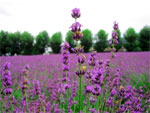For years my mom brought home those stinky plug in air freshners from the store. She always wanted our house to smell great for us, but didn’t realize how toxic the air fresheners really were. She has since turned to using wise natural solutions for a great smelling house and both she and I are much happier!
So how toxic ARE the air fresheners people use? You’re about to find out!
Wise Natural Solution to a Great Smelling House
I was shocked to learn about all the chemical poisons in scented products. Look at this: The Environmental Health Association of Ontario lists (just for scented candles) these chemical ingredients: Acetone, Benzene, 2-Butanone, Carbon Disulfide, Carbon Tetrachloride, Cresol, Chlorobenzene, Carbon Monoxide, Cyclopentene, Ethylbenzene, Lead, Mercury Phenol, Styrene Tetrachloroethene, Toluene, 1,1,1-Trichloroethan, Trichloroethene, Trichlorofluoromethane, and Xylene. Studies show that these toxins are being off-gassed without the candles being lit.
The U.S. Environmental Protection Agency lists four main ingredients in all “Air Freshener” products: Formaldehyde, Petroleum distillates, P-dichlorobenzine, and “aerosol propellants.” The Natural Resources Defense Council indicates that 86% of all “air fresheners” have phthalates in their ingredients. Phthalates are carcinogens that attack the endocrine system. They are also found in paints, vinyls and pesticides. In scent dispensers, phthalates are used to dissolve and carry the smell of fragrance.
Anne Steinemann’s research at the University of Washington in 2008 showed that even “air fresheners” labeled “organic, “green” or “with essential oils” emitted hazardous and carcoinogenic chemicals. The U.S. Department of Labor acknowledges that “fresh scent” ingredients are also used in fertilizers, pesticides, and munitions, and that the scents of “air fresheners” can lead to upper respiratory tract irritation.
(Well, DUH! Pesticides????)
Other known toxins in scent products include acetone, chloromethane, acetaldehyde and 1,4 dioxane, chloroform, benzylacetate, and pentane, all which cause lung, brain, and central nervous system problems. There are over 200 possible chemical ingredients in the “umbrella term” “Fragrance.” Besides scented candles, pop-ups and “plug-ins”, these toxic chemicals are also used in virtually all scented products: deodorants, perfumes, lotions, dish soaps, body soaps, shampoos, (etc.) and all the various scented laundry products (detergents, fabric softeners, static-free dryer sheets, scented bleach). If you can smell it, you’re probably being poisoned. So, FYI to all you folks who think Fragrance equals “Fresh”, or “Sexy”, or “Mellow”: Chemically manufactured fragrances are actually harming you in a variety of ways even more insidious and dangerous than the chemicals found in cigarette tobacco.
[…]
Ignorance is not bliss. All these toxic ingredients are all just molecules looking to attach themselves to other molecules, and whether we can smell them or not, they are lodging themselves by the trillions in our bodies. All chemically scented products are loaded with potential health problems, not only for the users, but for others who are breathing the scent of those products. Children, because of their size, and their youth, face even greater risks of health problems. Sadly, the adverse reactions they suffer to the neuro-toxic chemicals in scents are most often misdiagnosed.
After all the scary, here’s some good news from the same article:
With regard to scenting your home: If you need to have a scent, you can buy essential oils made from organically grown plants (lemon verbena, rose geranium, rose, lavender, et al) and put drops of these various chemical-free oils in little electrically run diffusers. In your home you can also boil water that contains cloves and cinnamon, and you will have that natural scent wafting through your home. Bowls of lemons give off a wonderful scent. Living plants enhance the air quality of any home. By using just one or two drops of organic essential oils on a piece of paper you can keep the inside of your car smelling naturally fragrant for days. Or, you can plug in the aforementioned essential oil diffuser into the car’s interior power-port. You can put a small paper bag of ground coffee in the car…
After getting cancer and realizing how many toxins we actually put into our body my mother made a major lifestyle change. Instead of store bought air freshners she now uses essential oils, boiled cinammon sticks and all kinds of other HEALTHY alternatives! Some of my favorite blends for wise natural solutions to a great smelling house are:
- Lavender & Peppermint Essential oils
- Lemon & Eucalyptus Essential Oils
- Clove & Cinnamon Essential Oils
- Orange & Cinnamon Essential Oils
I’d love to know what your favourite blends are 🙂 Share them in your comments below!

Speak Your Mind
You must be logged in to post a comment.